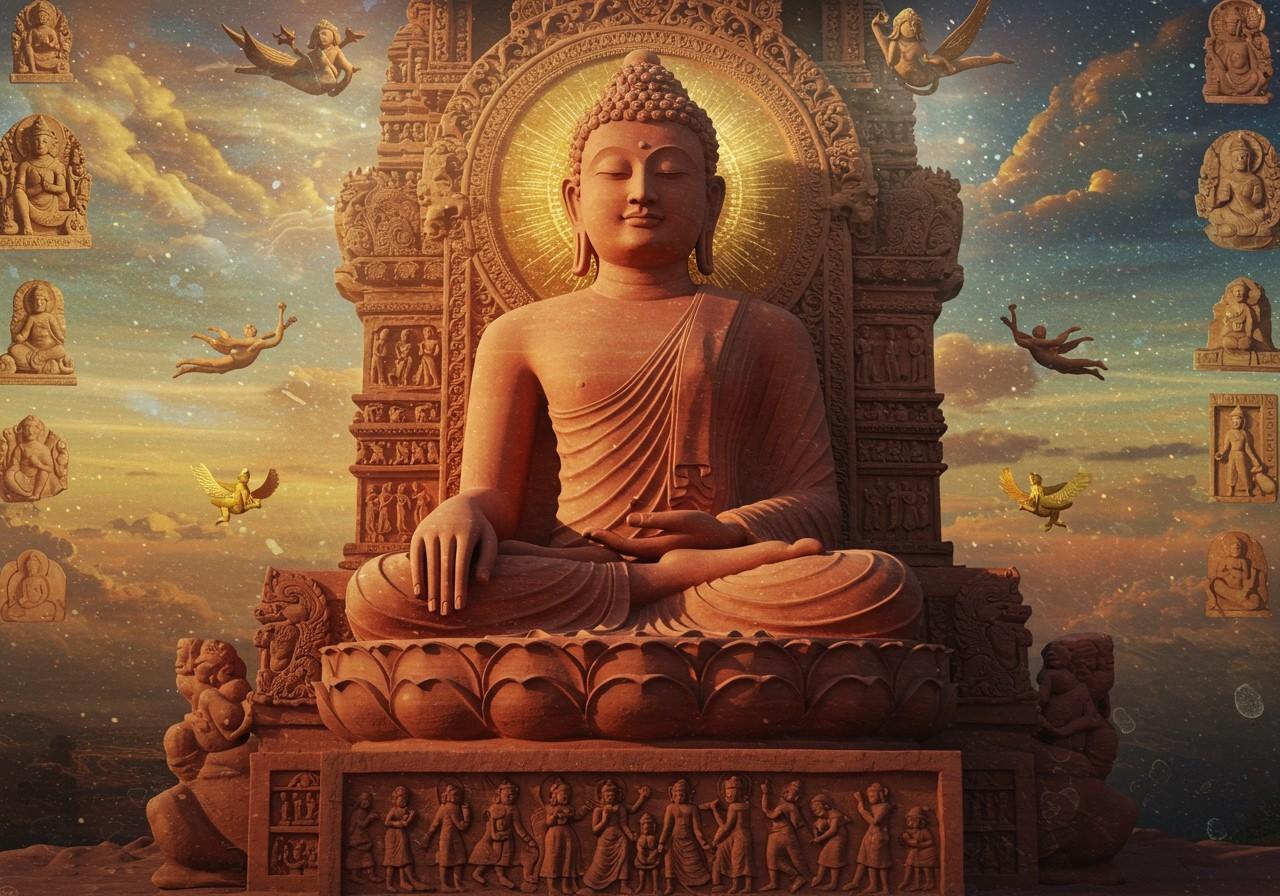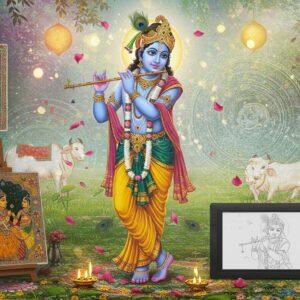
Exploring the rich tapestry of Mathura art and its profound influence on the depiction of Buddha. Mathura, a city steeped in history and spirituality, holds a significant place in India’s artistic heritage. From the 2nd century BCE, Mathura emerged as a prominent center for artistic expression, particularly during the Kushān and Gupta periods (1st-6th century CE). The Mathura school of art, renowned for its distinctive red sandstone sculptures, played a pivotal role in shaping the visual representation of Buddha, transitioning from symbolic depictions to more lifelike portrayals.
Historical Background of Mathura Art
Flourishing under the Kushan Empire (1st-3rd century CE), Mathura art absorbed influences from Hellenistic and Persian artistic traditions. The city became a melting pot of creativity, where Buddhist, Jain, and Hindu artistic expressions coexisted and thrived. Sculptors skillfully worked with locally abundant red sandstone, employing various techniques to craft intricate and expressive forms. Royal patronage and the support of affluent merchants further fueled Mathura’s artistic growth, establishing it as a leading center for sculptural production.
The Evolving Iconography of Buddha in Mathura Art
Mathura art developed a unique visual language for representing Buddha. Key iconographic elements included:
- Ushnisha: The cranial protuberance symbolizing wisdom and enlightenment.
- Urna: A mark on the forehead representing a third eye, signifying spiritual insight. Often depicted as a curl of hair or a jewel.
- Mudras: Symbolic hand gestures, such as the Abhaya Mudra (fearlessness) and Dhyana Mudra (meditation), conveying different aspects of Buddha’s teachings.
- Attire and Posture: The robes and posture of Buddha held symbolic meaning, reflecting his monastic life and spiritual attainment.
- Halo: A radiant aura surrounding Buddha’s head, symbolizing his divine nature and enlightenment.
Evolution of Buddha Depictions in Mathura Art
The portrayal of Buddha in Mathura art underwent a significant transformation over time. Initially, aniconic symbols represented Buddha, but gradually, these evolved into iconic, human-like depictions. The Gandhara school of art, with its Greco-Roman influences, also impacted the artistic style of Mathura’s Buddha sculptures. This evolution reflected changing religious and political landscapes, as well as the integration of local cultural elements into the artistic representations.
Mathura Art’s Unique Buddha Mudras
Mathura Buddha sculptures showcase a variety of mudras, each carrying specific symbolic meanings:
- Abhaya Mudra: Dispelling fear and offering protection, symbolizing reassurance and peace.
- Dhyana Mudra: Representing meditation and the path to enlightenment, signifying deep contemplation and inner peace. Often depicted with hands resting in the lap, palms facing upwards.
- Bhumisparsha Mudra: Symbolizing Buddha’s victory over temptation and his enlightenment under the Bodhi tree, signifying groundedness and triumph over earthly desires.
- Varada Mudra: The gesture of giving and compassion, representing generosity and benevolence towards all beings.
- Dharmachakra Mudra: Representing the turning of the wheel of dharma, signifying the teachings of Buddha and the spread of his message. Often depicted with the thumb and index finger forming a circle.
- Vitarka Mudra: The gesture of discussion and intellectual debate, symbolizing the transmission of knowledge and philosophical discourse.
Cultural Significance and Legacy
Mathura art, with its distinctive Buddha imagery, has profoundly impacted Indian culture and spirituality. The art form promoted Buddhist ideals and values, influencing later artistic styles across India. Ongoing preservation and restoration efforts aim to safeguard this invaluable heritage for future generations. Even today, Mathura Buddha art resonates with contemporary Indian culture, shaping religious practices and rituals. For those seeking a connection to their cultural roots, Mathura’s Buddha depictions offer a timeless link to tradition and spiritual heritage.
Where to Find Authentic Buddha Statues for Your Sacred Space
Poojn.in, India’s leading online store for cultural and religious goods, offers a wide selection of authentic Buddha statues inspired by the rich artistic traditions of Mathura. Explore our collection and bring the serene presence of Buddha into your home.
Our handcrafted Buddha statues, meticulously crafted from marble dust, capture the essence of Mathura art. We offer a 15 cm Buddha idol in a meditative pose, adorned with traditional iconographic details such as the ushnisha and elongated earlobes. Discover this exquisite piece and other sacred items on our website.
For bulk orders or wholesale inquiries, please contact us via WhatsApp at +91 7908548235. We offer competitive pricing and secure delivery across India.
Conclusion
Mathura art’s Buddha depictions serve as a powerful reminder of India’s rich spiritual and artistic heritage. These sculptures trace the evolution of Buddhist iconography, reflecting the changing cultural and religious landscape over centuries. The unique artistic features, symbolic mudras, and profound cultural significance of Mathura Buddha art underscore its enduring legacy, inspiring reverence and contemplation even today.


